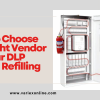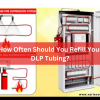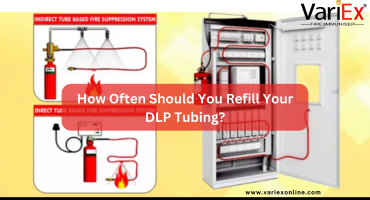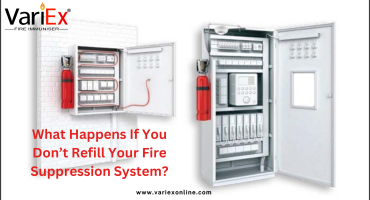![]()
Fire Immuniser
+91-7829629111
Email: info@variex.in
Varistor Technologies Pvt. Ltd.
Block-1, First Floor, Ardente Office One, Hoodi Circle, ITPL Main Road, Bengaluru, Karnataka 560048, IN
How Often Should You Refill Your Fire Suppression System?
How Often Should You Refill Your Fire Suppression System?
Fire suppression systems are the silent protectors of our homes, offices, data centers, restaurants, and industrial facilities. While we often think of these systems only in emergencies, their maintenance—especially refilling—is critical to their functionality and effectiveness.
One of the most important maintenance tasks is refilling the fire suppression system at the correct intervals. But how often should you refill your fire suppression system? The answer depends on several factors including the type of system, environment, regulatory requirements, and whether the system has discharged.
This article breaks down everything you need to know about fire suppression system refill frequency, system-specific timelines, compliance standards, and proactive maintenance strategies.
Why Fire Suppression Refill Frequency Matters
Refill frequency isn't just about staying operational—it's about life safety, compliance, and liability. Here's why staying on schedule is crucial:
System Reliability: Without proper pressure or a full charge, a fire suppression system may fail during a fire.
Code Compliance: Regulatory bodies like the NFPA (National Fire Protection Association) and local authorities mandate regular maintenance and refilling.
Insurance Requirements: Inadequate maintenance can void your insurance policy in the event of a fire.
Cost-Effectiveness: Emergency refilling after a failure is more expensive than planned maintenance.
How Often Should You Refill? Refill Frequency by System Type
Refill schedules vary by system type and application. Here’s a breakdown:
| System Type | Recommended Refill Interval | NFPA Standard |
|---|---|---|
| Dry Chemical Suppression Systems | Every 6-12 years or after discharge | NFPA 17 |
| Wet Chemical (Kitchen Hood) | Every 6 months inspection, refill if needed | NFPA 17A |
| Clean Agent (FM-200, Novec 1230) | Annual inspection, refill after discharge | NFPA 2001 |
| CO₂ Systems | Every 5 years (hydrostatic test), refill after use | NFPA 12 |
| Water Mist Systems | Annually or after discharge | NFPA 750 |
| Foam Systems | Annual testing, refill based on agent analysis | NFPA 11 |
Factors That Influence Refill Timing
Refill frequency can’t always follow a fixed calendar. Several external and internal factors affect how often your system should be refilled:
System Activation
Any discharge event—whether real or false—requires a full refill.Environmental Conditions
Systems exposed to high humidity, corrosive chemicals, or extreme temperatures may degrade faster and need more frequent attention.Type of Suppression Agent
Some agents (like CO₂ and clean agents) are stable for years, while others (like foam) require annual chemical analysis.Tank Pressure & System Wear
Aging tanks or degraded seals can lead to slow leaks, triggering earlier refills.Inspection Outcomes
Professional inspections may reveal issues requiring refill before the usual interval.
Legal & Industry Refill Standards (NFPA Guidelines)
The National Fire Protection Association (NFPA) sets industry benchmarks for refill frequency and inspection timelines. Here’s a quick overview:
NFPA 17 – Dry chemical systems must be maintained every 6–12 years or post-discharge.
NFPA 17A – Wet chemical kitchen systems require semi-annual inspections.
NFPA 2001 – Clean agent systems must be inspected annually; refill if agent loss exceeds 5%.
NFPA 12 – CO₂ systems must undergo hydrostatic testing every 5 years.
NFPA 750 – Water mist systems need annual inspection and post-incident refill.
NFPA 11 – Foam systems require annual sample testing and possible refill depending on agent condition.
These standards are not optional. Failure to comply could lead to fines, insurance claims denial, or even legal action.
What Happens During a Refill?
The refill process for fire suppression systems is a precise and highly regulated task:
System Deactivation – To ensure safety during the refill process.
Agent Removal – The old or remaining suppression agent is safely evacuated.
Tank Testing & Cleaning – Tanks are inspected for corrosion, wear, or leaks.
New Agent Injection – Based on system specs, the exact amount of agent is added.
Pressure Calibration – The system is re-pressurized and tested to ensure functionality.
System Reset – The control panel is reset, and the system is placed back into service.
Refill must be done by licensed professionals, not in-house teams unless certified.
Cost of Refilling Fire Suppression Systems
The cost to refill depends on several factors:
Type of system and agent
System capacity
Labor and certification requirements
Location and travel charges
Estimated Refill Costs:
| System Type | Estimated Refill Cost |
|---|---|
| Kitchen Hood System | 26000 – 61000 |
| Clean Agent System | 87000 – 434000+ |
| CO₂ System | 35000 – 1,03,971 per cylinder |
| Foam System | 43,321 – 1,73,284+ |
While refills may seem expensive, delaying them can lead to much higher losses from fire damage or non-compliance penalties.
Signs Your Fire Suppression System Needs Refilling
Keep an eye out for these red flags:
Pressure gauge in the red or low zone
System discharge or partial discharge
Visible corrosion or agent leakage
Audible alarms or control panel warnings
Failed inspection report
If any of these signs appear, contact a certified fire safety technician immediately.
Preventive Maintenance Tips
Schedule semi-annual inspections even if refills aren't yet due.
Track refill and inspection dates using maintenance logs.
Keep a digital or physical maintenance calendar.
Train your staff to identify warning signs.
Use only licensed refill service providers to avoid legal issues.
Benefits of Timely Fire Suppression Refilling
Guaranteed performance during emergencies
Compliance with fire codes and insurance standards
Longer system lifespan
Reduced repair and emergency service costs
Peace of mind for facility owners and employees
Conclusion
Refilling your fire suppression system is a vital aspect of safety and compliance, not just another routine task. From dry chemical to clean agent systems, every type of suppression solution requires tailored attention and timely maintenance.
By understanding the refill frequencies based on NFPA standards, environmental conditions, and system usage, you can protect your people, property, and business from preventable fire damage.
Don't wait for a fire to discover your system isn’t ready—schedule inspections, track refill dates, and always work with certified professionals.
Frequently Asked Questions
Yes, depending on the system type and inspection outcomes, refills may still be required due to pressure loss or chemical degradation.
Most systems require inspection every 6 to 12 months, as per NFPA guidelines.
No. Refilling must be done by certified professionals to meet regulatory and insurance requirements.
Look for discharge events, pressure gauge changes, or follow your scheduled maintenance plan.
You risk system failure during a fire, code violations, insurance claim denial, and significant property damage.
Final Say
At VariEx.in and VariexOnline.com, we specialize in supplying and installing top-quality fire fighting systems and equipment. From fire extinguishers to advanced suppression systems, we offer comprehensive solutions tailored to your needs. Our experienced team ensures precise installation and maintenance for optimal safety.
Trust VariEx for reliable fire protection. Contact us online or call 7829629111 to learn more.
We specialize in manufacturing, supplying, and distributing a comprehensive range of fire fighting equipment, including state-of-the-art fire extinguishers. Read our most searched blogs and find interesting information on topics such as how to use a fire extinguisher, how to calculate fire fighting water tank capacity, fire extinguisher refilling, obtaining a Fire NOC, understanding fire fighting systems, types of fire protection systems, the fire hydrant system, and the fire sprinkler system. These resources provide essential knowledge for ensuring safety and compliance with fire safety regulations. Additionally, you can explore guides on the maintenance of fire protection equipment, the latest advancements in fire safety technology, and best practices for fire risk assessment and management.
Our expertise extends to fire alarm systems, fire hydrant systems, and fire suppression systems, including fire sprinklers. Each product meets rigorous international standards for reliability and performance, ensuring effective fire safety products tailored to diverse applications and industries. Additionally, we are providing Fire Extinguisher Refilling and AMC services to ensure ongoing maintenance and operational readiness of fire safety equipment.
"WHAT YOU CAN READ NEXT"
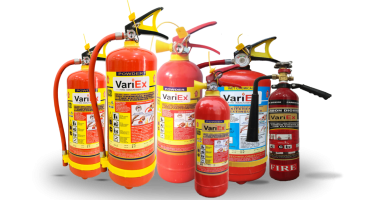 Read more +24 November 2023 in Fire Extinguisher
Read more +24 November 2023 in Fire ExtinguisherWhat types of fire extinguishers are available for different fire classes?
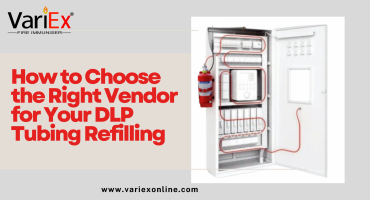 Read more +11 April 2025 in Fire Suppression
Read more +11 April 2025 in Fire Suppression


